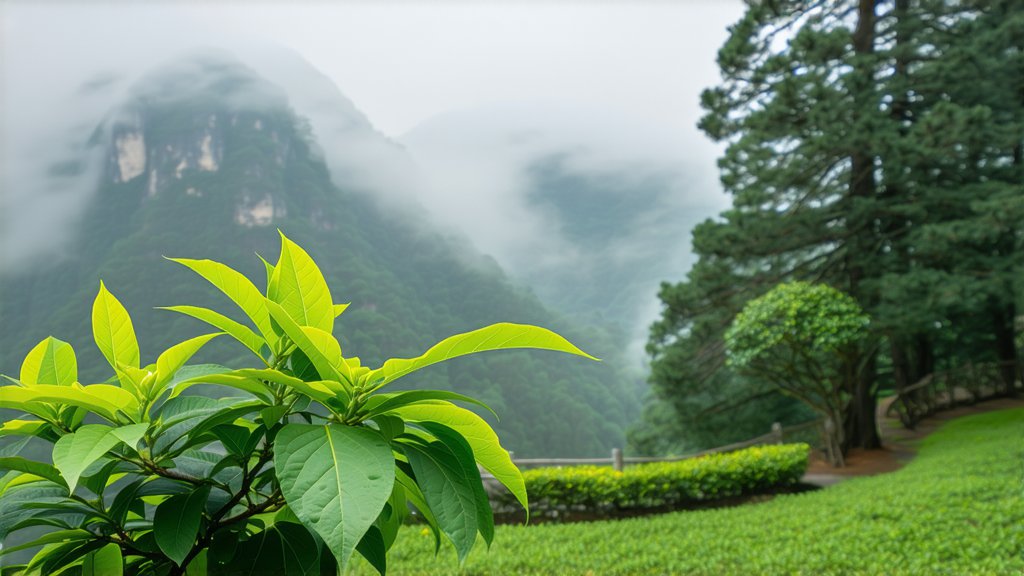
Huangshan Maofeng, a distinguished variety within the realm of Chinese yellow tea, stands as a testament to the intricate artistry and profound history embedded in China's tea heritage. Nestled in the picturesque landscapes of Anhui province, this tea is not merely a beverage; it is an experience that encapsulates centuries of tradition, meticulous craftsmanship, and the delicate balance between nature and human ingenuity.
Historical Roots: Tracing Back to Ancient Times
The origins of Huangshan Maofeng can be traced back to the Tang Dynasty (618-907 AD), a period when tea was not only a popular drink but also a symbol of cultural refinement and social status. Its name, "Maofeng," translates to "Peak Hair," referring to the fine, peak-shaped leaves that characterize this tea. Over the centuries, it has evolved into a revered tea variety, cherished for its unique flavor profile and health benefits.
Varieties and Classification
Within the broad category of Chinese yellow tea, Huangshan Maofeng is often considered one of the pinnacle expressions. Unlike green or black tea, yellow tea undergoes a unique process called "meng shan," which involves allowing the tea leaves to partially oxidize before they are fully dried. This process imparts a distinct golden hue to the leaves and a subtle sweetness to the brew, setting it apart from other tea categories.
The Art of Crafting Huangshan Maofeng
The journey from leaf to cup for Huangshan Maofeng is a labor-intensive process that demands precision and patience. It all begins with the careful selection of tender shoots, typically plucked in early spring when the first buds emerge. These are then meticulously processed through several stages:
- Fixation: The fresh leaves are briefly heated to halt enzymatic activity, preserving their vibrant color and aroma.
- Menshaning: This is the crucial step where the leaves are wrapped in cloth and left to oxidize slowly under controlled conditions. The duration and temperature during this phase significantly impact the final flavor and appearance of the tea.
- Shaking and Drying: After the oxidation process, the leaves are gently shaken to remove excess moisture and then slowly dried, often using traditional methods like sun drying or low-temperature ovens.
- Sorting and Grading: Finally, the dried leaves are sorted by hand to ensure uniformity in size and quality, with each grade representing a different level of craftsmanship and taste.
A Symphony of Flavors and Aromas
When brewed, Huangshan Maofeng unfurls into a spectacle of golden liquor, exuding a complex bouquet of floral, fruity, and slightly nutty notes. Its taste profile is characterized by a harmonious blend of mellow sweetness, subtle bitterness, and a lingering aftertaste that invites contemplation. Each sip reveals layers of flavors, reflecting the terroir of the Anhui mountains and the skillful hands that crafted it.
The Ritual of Tasting
To truly appreciate Huangshan Maofeng, one must engage in the art of tea tasting or "cha dao." This ritualistic practice involves not just the act of drinking but also observing, smelling, and feeling the tea. Here's a guide to savoring this exquisite tea:
- Preparation: Use freshly drawn, filtered water at around 80-85°C (175-185°F). Warm the teapot and cups with hot water to maintain the optimal brewing temperature.
- Infusion: Place approximately 3 grams of Huangshan Maofeng per 150ml of water. Let the tea steep for about 2-3 minutes, adjusting based on personal preference for strength.
- Observation: As the leaves dance in the water, admire their graceful movements and the transformation of color from dry to infused.
- Aroma Appreciation: Before taking a sip, bring the cup close to your nose and inhale deeply to capture the full spectrum of scents released by the warm tea.
- Sipping: Take small sips, allowing the liquid to coat your palate and savor the interplay of flavors. Notice how the taste evolves with each sip and throughout subsequent infusions.
- Reflection: Take time to reflect on the experience, appreciating not just the physical sensations but also the cultural and historical context that surrounds this ancient tea.
Health Benefits and Modern Appeal
Beyond its sensory delights, Huangshan Maofeng is celebrated for its potential health benefits. Rich in antioxidants, vitamins, and minerals, it is believed to aid digestion, boost immunity, and promote overall wellbeing. In today's fast-paced world, where mindfulness and wellness are increasingly valued, this tea offers a moment of tranquility and a bridge to ancient traditions.
In conclusion, Huangshan Maofeng embodies the essence of Chinese tea culture—a harmonious blend of history, art, and nature. As you embark on your own exploration of this hidden gem, may each cup serve as a reminder of the profound connections we share with the land and the legacy of those who came before us.